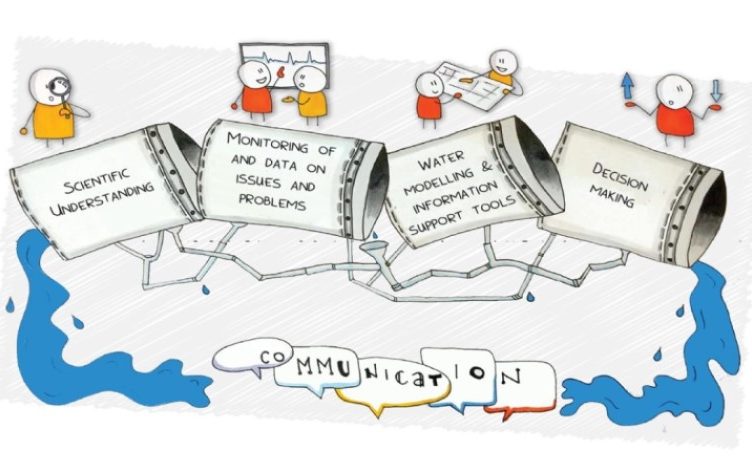
05/12/2024
Event Summary: Overview of water quality modelling projects from the Queensland Water Modelling Network with Callym Dunleavy
Read more
The marriage of data and models is reliant on trust and effective communication. Trust in the source of data, its accuracy, the modelled outcomes, and communication to all affected. But the relationship between data and models has a long-standing history of frustration for modellers, decision makers and scientists alike. In recent years, the “dark art” of modelling, has been thrust upon the public resulting in misunderstanding and a tonne of questions for the modelling “artists”. In seeking to unveil the mystery, discrepancies between model and data, are being exposed and transparency for decision making is becoming more and more publicly important.
Data literacy and the ability for non-modellers to understand the “dark art” of modelling, has become an essential skill in modern life. National radio network, ABC’s RN recently took a dive into the discussion with their article DIRTY DATA where the reliability of research data, how it can be misread and the dangers of extrapolation was explored.
On Tuesday 30 November, a small and dedicated group of water professionals, gathered to hear from two expert modellers with unique backgrounds. Andrew Thompson of Water Technology and Kate O’Brien of UQ, shared their experience of bringing data and models together through the lenses of practice and conceptual thinking.

We began the event with a quick participant check in to find out what experience we had collectively. In the room were academics, High Degree Researchers, water consultants and NRM professionals. Participants included those with experience collecting data, modelling data, interpreting and communicating data and models, and teaching others how to critically assess data and models.

Andrew started us off with an introduction to the significance of flood studies, the kinds of information he must consider when flood modelling, and the accuracy of modelled outcomes. In his presentation he shared that flood modelling requires a range of input data, in particular topography, rainfall and land use. However, limitations to data availability, data accuracy and reliability, create constraints that must be effectively communicated to decision makers and affected stakeholders, which can result in an increased lack of trust.
Andrew provided an example for topographic data, demonstrating the Shuttle Radar Topography Mission (SRTM) data, available for the entire country, with an accuracy of only 90 meters, creates significant issues for model reliability and further, the accuracy of final reports. These reports inform landholders, developers, and councils on flooding potential in their catchments. Accordingly, large error margins impact on confident decision making. In recent years, Lidar has become the most reliable topographic information in Australia with an accuracy of one meter. However reliable it might be, Lidar is costly and difficult to coordinate and is therefore, often not available. Flood modelling is a delicate balance of art and science, experience, and ground-truthing. Andrew’s presentation can be viewed HERE, best viewed as a slideshow.

Next, Kate O’Brien opened a discussion on benefits, barriers and opportunities to integrating information from water models and monitoring data for improved decision-making. Kate is leading the QWMN Research Development & Innovation project, “A framework to marry models and data” with delivery partners, University of Queensland, Queensland Department of Resources (Paddock to Reef Modelling), Queensland University of Technology and Alluvium Consulting. The project considers the discrepancies between models and data and aims to deliver a conceptual framework to improve alignment and communication between the two. Included with the framework, the project will produce an educational tool for both professionals and stakeholders impacted by the use of modeling tools with the aim of effectively communicating the value of quality data.
In sharing the project, Kate sort to test the current concept and pick the brains of our network participants. It was all hands on deck to help generate alternative ideas and adjust misunderstandings in alignment opportunities for the project. View Kate’s presentation HERE.

Despite every effort to understand each other, the relationship between data and models is a complex one. As a consequence, outcomes that are forthcoming today, may be seen in a different light, require a different process or result in a different decision or understanding of the information, tomorrow. Communication, commitment and knowledge of strengths and weaknesses are key to their successful marriage.
Thank you to Andrew, Kate and all participants at this event, and all events throughout 2021. It has been a year of shaping the direction of water modelling in Queensland and has been driven by you, your passion and determination to bring this industry into the future.
From the QWMN Capability, Collaboration and Capacity Program team – Brian, Piet and Sarah, we look forward to a big year of events in 2022 and hope you will be able to join us. Until then, have a wonderful break over the summer and stay safe.